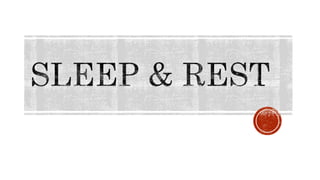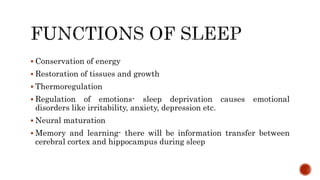This document discusses the concepts of rest and sleep, detailing the physiological processes involved in sleep regulation, including the roles of the brain and biological rhythms. It outlines the stages of sleep, factors affecting sleep quality and quantity, and various sleep disorders such as insomnia and sleep apnea. Additionally, it provides strategies for improving sleep hygiene and creating conducive sleeping environments.
































